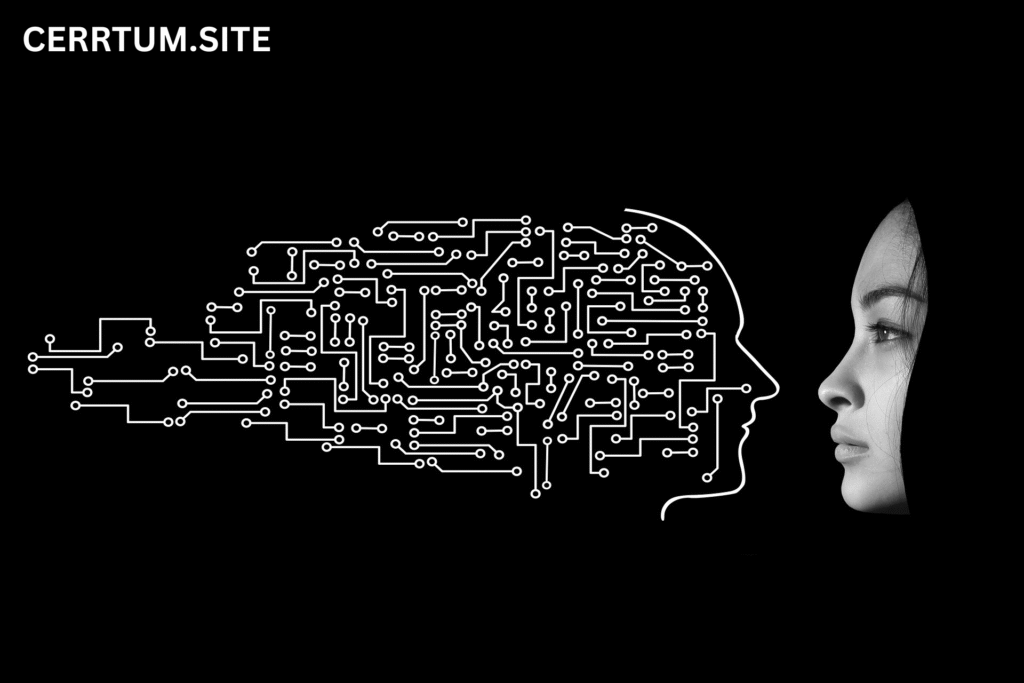
Digital transformation is now a strategic need in the fast-changing corporate environment of today, not just a fad. Of all the corporate operations experiencing this seismic change, procurement is among the most affected. The integration of digital technology into procurement systems to improve efficiency, transparency, agility, and value generation is known as digital procurement transformation. This change goes beyond just automating current procedures to include redefining procurement to fit digital-age corporate structures.
This article investigates the idea, underlying causes, elements, advantages, difficulties, and future direction of the digital procurement revolution.
Understanding Digital Procurement Transformation
Digital procurement transformation is revolutionising procurement procedures by means of technologies like artificial intelligence (AI), machine learning (ML), robotic process automation (RPA), blockchain, cloud computing, big data analytics, and the Internet of Things (IoT). It seeks to build agile procurement systems that can react to changing corporate demands and dynamic market circumstances, smarter, more linked systems.
Historically, procurement—often working in silos with little strategic influence—focused on cost control and process efficiency. From a tactical role to a strategic facilitator of innovation, risk management, sustainability, and competitive advantage, digital transformation elevates procurement.
Key Drivers of Digital Procurement Transformation
Several factors are driving organizations to rethink and digitize their procurement functions:
1. Globalization and Supply Chain Complexity
With global supply chains becoming more intricate, procurement professionals face increasing complexity in managing suppliers, ensuring compliance, and mitigating risks. Digital tools help streamline and coordinate global sourcing and supplier collaboration.
2. Data Explosion
Organizations generate massive volumes of data daily. Digital procurement tools enable the collection, analysis, and interpretation of this data to make informed decisions, identify trends, and forecast future requirements.
3. Demand for Agility
The business environment is characterized by volatility, uncertainty, complexity, and ambiguity (VUCA). Procurement must become more agile to respond swiftly to disruptions, such as those seen during the COVID-19 pandemic or geopolitical tensions.
4. Sustainability and Compliance
Stakeholders increasingly demand ethical sourcing and environmental responsibility. Digital tools help monitor supplier compliance, track sustainability metrics, and report transparently.
5. Cost and Efficiency Pressures
Organizations continuously seek to do more with less. Automating manual tasks, optimizing sourcing strategies, and leveraging data analytics through digital procurement can lead to substantial cost savings.
Core Technologies in Digital Procurement
Digital procurement is powered by a suite of interrelated technologies that collectively reshape the procurement function:
1. Artificial Intelligence and Machine Learning
AI/ML can automate repetitive tasks like invoice processing, classify spend categories, and even make predictions regarding supplier performance. Chatbots can handle supplier inquiries, and cognitive analytics can help in complex decision-making.
2. Robotic Process Automation (RPA)
RPA automates rule-based tasks such as data entry, purchase order creation, and approval workflows, significantly reducing cycle times and human error.
3. Cloud Computing
Cloud-based procurement platforms allow for scalability, real-time collaboration, and lower IT maintenance costs. They facilitate centralized data access across departments and geographic locations.
4. Big Data and Advanced Analytics
Procurement analytics offer insights into spending patterns, supplier performance, and market trends. Predictive analytics can anticipate demand or supply risks, while prescriptive analytics recommend optimal sourcing strategies.
5. Blockchain
Blockchain provides a secure, transparent, and immutable ledger for recording transactions, verifying supplier credentials, and tracking goods through the supply chain. It improves trust and traceability.
6. Internet of Things (IoT)
IoT devices can monitor inventory levels, shipment conditions, and equipment usage in real time. This connectivity ensures better planning, asset management, and risk mitigation.
Stages of Digital Procurement Transformation
The journey toward digital procurement typically follows a phased approach:
1. Digitization
This is the foundational stage where paper-based processes are converted into digital formats. Examples include e-invoicing and e-catalogs.
2. Automation
At this stage, organizations automate repetitive, rule-based tasks using tools like RPA, streamlining operations and improving consistency.
3. Integration
Procurement systems are integrated with other enterprise systems such as ERP, CRM, and supplier management platforms to facilitate seamless data exchange and collaboration.
4. Intelligence
Advanced analytics, AI, and machine learning capabilities are introduced to enhance decision-making, risk assessment, and strategic planning.
5. Innovation
In the final stage, procurement becomes a driver of innovation by fostering supplier collaboration, crowdsourcing ideas, and leveraging digital ecosystems.
Benefits of Digital Procurement Transformation
The advantages of transforming procurement digitally are multifold:
1. Operational Efficiency
Automation reduces manual tasks, increases transaction speed, and minimizes errors. This frees up procurement professionals to focus on strategic initiatives.
2. Cost Savings
Digital tools help identify cost-saving opportunities through better spend analysis, supplier negotiation, and demand management.
3. Improved Decision Making
With real-time data and advanced analytics, procurement leaders can make informed decisions regarding sourcing, inventory, and supplier performance.
4. Enhanced Supplier Collaboration
Cloud platforms and digital communication tools facilitate better engagement with suppliers, leading to stronger partnerships and innovation.
5. Risk Mitigation
Digital procurement enhances visibility across the supply chain, allowing early detection of risks such as supplier insolvency, geopolitical issues, or natural disasters.
6. Agility and Scalability
Digital systems are scalable and adaptable, enabling organizations to respond quickly to market changes and business growth.
7. Sustainability and Compliance
Automated tracking and reporting tools ensure adherence to regulatory standards and corporate social responsibility goals.
Challenges in Implementing Digital Procurement
Despite its numerous benefits, digital procurement transformation is not without obstacles:
1. Change Management
Resistance from employees and stakeholders can impede adoption. Organizations must foster a culture of innovation and provide training to support new ways of working.
2. Data Quality
Digital tools are only as effective as the data they process. Poor data quality can lead to inaccurate insights and misguided decisions.
3. Integration Complexity
Integrating new procurement tools with legacy systems can be technically challenging and resource-intensive.
4. Cybersecurity Risks
Digital procurement involves the exchange of sensitive information. Robust cybersecurity measures are essential to protect data and maintain trust.
5. Cost and ROI Concerns
Initial investment costs can be high. Organizations must ensure a clear roadmap and measurable ROI to justify the transformation.
Case Studies in Digital Procurement Transformation
Several leading organizations have successfully transformed their procurement functions through digital initiatives:
-
Unilever: Leveraged AI and analytics to gain deeper insights into supplier performance and demand forecasting, resulting in cost savings and improved supplier relationships.
-
Siemens: Adopted blockchain and IoT technologies to enhance transparency and traceability across its global supply chain.
-
Coca-Cola: Deployed a digital procurement platform to automate sourcing and contract management, improving compliance and reducing administrative workload.
These examples demonstrate how digital procurement can drive significant improvements in performance, compliance, and innovation.
Future of Digital Procurement
As technologies continue to evolve, the future of digital procurement promises even greater transformation:
-
Autonomous Procurement: AI-driven systems could soon handle entire procurement cycles autonomously—from requisition to payment—minimizing human intervention.
-
Procurement-as-a-Service (PaaS): Cloud-based subscription models may allow companies to access procurement capabilities on-demand, offering flexibility and cost efficiency.
-
Sustainable Procurement: With rising environmental awareness, digital tools will increasingly help monitor carbon footprints, ethical sourcing, and circular economy practices.
-
Hyper-Personalization: Procurement platforms may offer customized user experiences based on roles, preferences, and past behaviors, enhancing usability and engagement.
-
Collaborative Ecosystems: Platforms enabling real-time collaboration among suppliers, manufacturers, logistics providers, and customers will become the norm.
Conclusion
The way companies source, buy, and handle products and services is changing because to digital procurement revolution. Using digital technologies and approaches helps companies improve strategic value generation, agility, and efficiency. But effective transformation calls for a change in attitude, culture, and ability as much as technology. Companies that actively negotiate these changes and make investments in future-ready procurement strategies will be more suited to flourish in a society becoming more and more digital and linked.
From cost management to value generation, from tactical execution to strategic vision, procurement’s influence will grow as we go ahead. The driver allowing this change is digital transformation, which opens fresh opportunities for innovation, sustainability, and competitive advantage.
